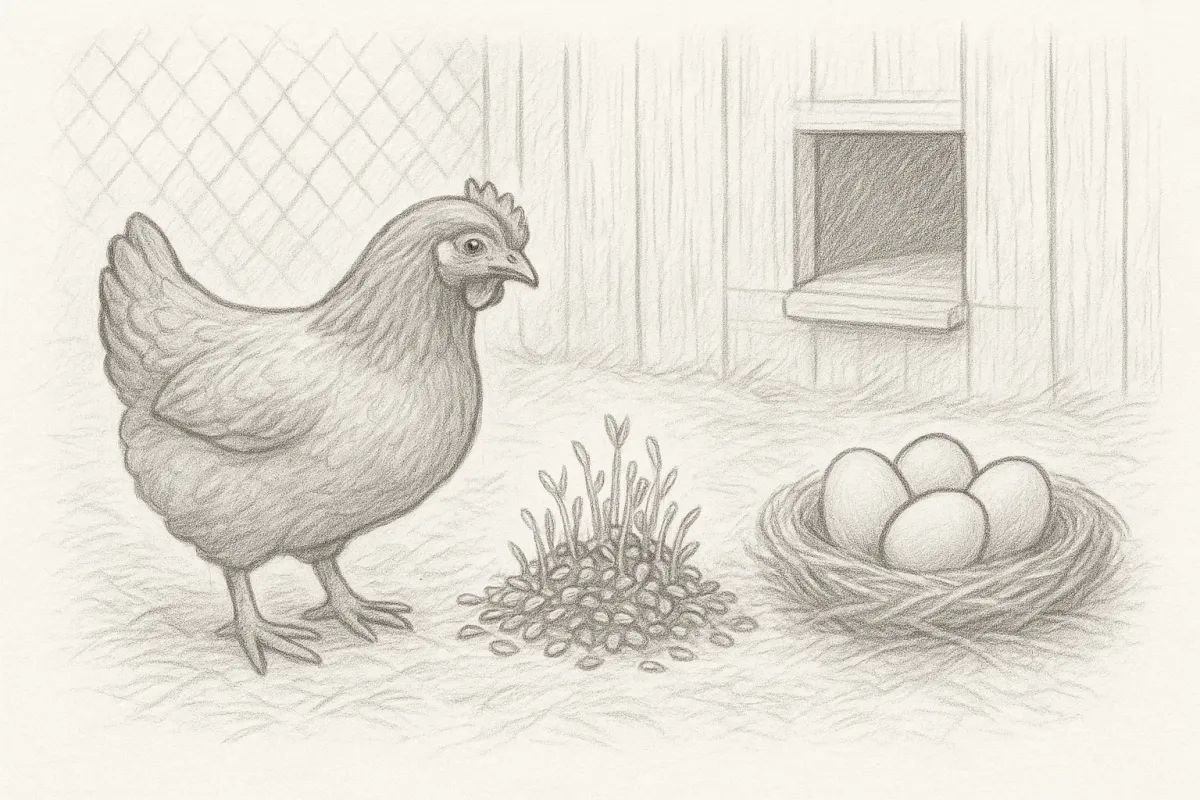
Have you ever started something only to realize, I could do this better?
Have you ever started something only to realize, I could do this better?
Quick Recap for Busy Chicken Peeps
Why grocery-store style eggs left me disappointed
How sprouts turned wasted feed into golden yolks
The taste-test that changed my chicken journey forever
Why animals really are what they eat
The slow road to better feed—and better flocks
The Day I Realized Chicken Feed Wasn’t Enough
I never expected to make chicken feed. Heck, I never expected to have more than a few hens scratching in the backyard. But when chickensshowed up inmy business, something magical happened.
They weren’t just birds anymore—they became a bridge. A bridge between me and the kids who needed someone to believe in them. A bridge to building a nonprofit with purpose.
Funny thing is, I thought Blooming Health Farms would all be about hydroponic vegetables. Lettuce, kale, tomatoes. That was the plan. Chickens weren’t part of the blueprint. Until they were.
And when I saw how those birds connected the dots, I knew I had to become more than just a chicken keeper. I had to become an expert.
The Taste That Didn’t Add Up
So I did what anyone starting out does. I listened. I read every book, binged every podcast, and followed the common advice.
“Go buy a bag of feed. Give each bird a quarter pound a day. Collect eggs. Done.”
It seemed simple. Until I cracked my first egg into the pan, fried it up, and tasted it.
You know what I said?
“These taste a lot like grocery store eggs. Why am I raising my own birds if the result is the same thing I can buy down the street?”
That moment hit me like a hammer. If my eggs were no different, then what was I really doing?
Back to Hawai’i
That thought carried me back to my research days in Hawai’i. My professor had created a feed for tilapia that changed everything. Fish that normally tasted bland suddenly tasted like fresh ocean catch. He did it by shaping their diet—adjusting the fatty acids to mimic what wild fish eat.
The first time I pan-fried one, I couldn’t believe it. It was like eating something caught straight off the reef. That’s when it clicked: animals are what they eat. Their feed changes everything.
So if fish could taste like the sea, then maybe my chickens’ feed could make eggs that tasted like something more.
Sprouts, Waste, and the First Compliment
It all started with failure.Igotshut down by the health department and suddenly had trays of unsellable sprouts piling up.Waste staring me in the face.
I wasn’t about to throw it all away, so I did the next best thing. I tossed the sprouts to my six chickens.
And then came the surprise. My customers started talking. “These eggs taste better than organic,” one said. Another bragged they were better than anything at the store. The chickens hadn’t changed. The feed had.
From Backyard to Blueprint
Word spread fast. Farmers and ranchers started asking about this little nonprofit in the city that was feeding hydroponic sprouts to chickens.They wanted to know if I could make it work for livestock.
That curiosity pushed me deeper, into research that revealed sprouted hydroponics had already been quietly tested in agriculture. It wasn’t new, but it was powerful.
So I crafted my own formula. A daily live feed, grown without electricity or expensive setups. And the chickens loved it. They’d abandon whatever they were doing the second I brought out sprouts.
The results? Healthier hens, lower feed costs, and eggs that made people stopmid-bite.
Why Most Folks Won’t Do It
Here’s the rub: sprouts work. They’re better for the birds and better for the eggs. But adoption is slow. People want shortcuts, not systems. They want quick fixes, not daily care.
That’s why I’m working on the next evolution of feed. Feed the chickens what they need, not just what the industry says they should get.
Because once you’ve tasted the difference, there’s no going back.
